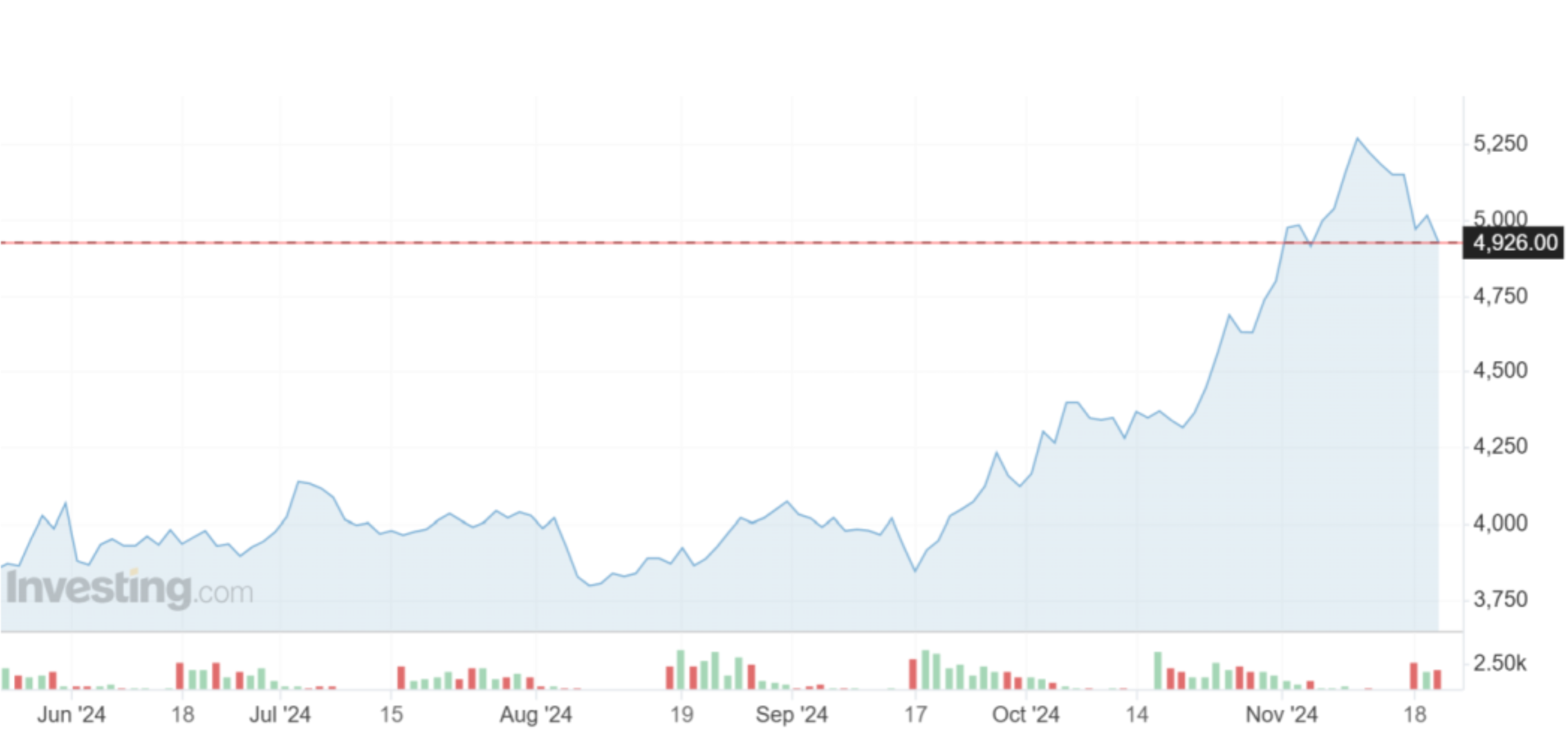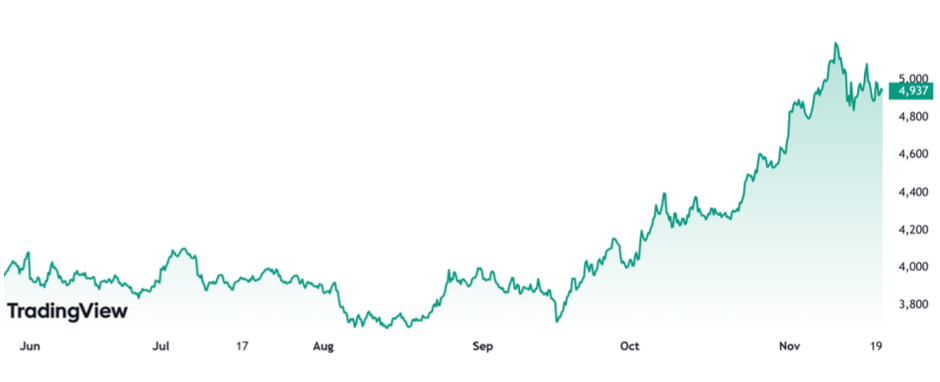What is Bipolar Disorder? - Koon Yew Yin
Koon Yew Yin
Publish date: Mon, 25 Nov 2024, 06:33 PM
Koon Yew Yin, 24th Nov 2024
My younger brother who was a dentist had bipolar disorder. Unfortunately, he committed suicide about 12 years ago.
Recently a young friend who often visits us was diagnosed with bipolar disorder. I wanted to know more about this mental illness. I Googled search to write this useful article for you.
Bipolar Disorder is formerly known as manic-depressive illness, is a brain and behavior disorder characterized by severe shifts in a person's mood and energy, making it difficult for the person to function. More than 5.7 million American adults or 2.6 percent of the population age 18 or older in any given year have bipolar disorder. The condition typically starts in late adolescence or early adulthood, although it can show up in children and in older adults. People often live with the disorder without having it properly diagnosed and treated.
What are the symptoms of Bipolar Disorder?
Bipolar disorder causes repeated mood swings, or episodes, that can make someone feel very high (mania) or very low (depressive). The cyclic episodes are punctuated by normal moods.
Mania Episode Signs and Symptoms:
- Increased energy, activity, restlessness
- Euphoric mood
- Extreme irritability
- Poor concentration
- Racing thoughts, fast talking, jumping between ideas
- Sleeplessness
- Heightened sense of self-importance
- Spending sprees
- Increased sexual behavior
- Abuse of drugs, such as cocaine, alcohol and sleeping medications
- Provocative, intrusive or aggressive behavior
- Denial that anything is wrong
Depressive Episode Signs:
- Sad, anxious or empty-feeling mood
- Feelings of hopelessness and pessimism
- Feelings of guilt, worthlessness and helplessness
- Loss of interest or pleasure in activities once enjoyed, including sex
- Decreased energy, fatigue
- Difficulty concentrating, remembering or making decisions
- Restlessness and irritability
- Sleeplessness or sleeping too much
- Change in appetite, unintended weight loss or gain
- Bodily symptoms not caused by physical illness or injury
Bipolar disorder patients have suicidal tendency. That was why my brother committed suicide-he preferred to die than suffer.
How is bipolar disorder diagnosed?
Bipolar disorder cannot yet be diagnosed physiologically by blood tests or brain scans. Currently, diagnosis is based on symptoms, course of illness, and family history. Clinicians rule out other medical conditions, such as a brain tumor, stroke or other neuropsychiatric illnesses that may also cause mood disturbance.
The different types of bipolar disorder are diagnosed based on the pattern and severity of manic and depressive episodes. Doctors usually diagnose brain and behavior disorders using guidelines from the Diagnostic and Statistical Manual of Mental Disorders, or DSM. According to the DSM, there are four basic types of bipolar disorder:
Bipolar I Disorder is mainly defined by manic or mixed episodes that last at least seven days, or by manic symptoms that are so severe that the person needs immediate hospital care. Usually, the person also has depressive episodes, typically lasting at least two weeks. The symptoms of mania or depression must be a major change from the person’s normal behavior.
Bipolar II Disorder is defined by a pattern of depressive episodes shifting back and forth with hypomanic episodes, but no full-blown manic or mixed episodes.
Bipolar Disorder Not Otherwise Specified (BP-NOS) is diagnosed when a person has symptoms of the illness that do not meet diagnostic criteria for either bipolar I or II. The symptoms may not last long enough, or the person may have too few symptoms, to be diagnosed with bipolar I or II. However, the symptoms are clearly out of the person's normal range of behavior.
Cyclothymic Disorder, or Cyclothymia, is a mild form of bipolar disorder. People who have cyclothymia have episodes of hypomania that shift back and forth with mild depression for at least two years. However, the symptoms do not meet the diagnostic requirements for any other type of bipolar disorder.
Some people may be diagnosed with rapid-cycling bipolar disorder. This is when a person has four or more episodes of major depression, mania, hypomania, or mixed symptoms within a year.
How is bipolar disorder treated?
While no cure exists for bipolar disorder, it is treatable and manageable with psychotherapy and medications. Mood stabilizing medications are usually the first choice in medication.
Lithium is the most commonly prescribed mood stabilizer. Anticonvulsant medications are usually used to treat seizure disorders and sometimes offer similar mood-stabilizing effects as antipsychotics and antidepressants.
Bipolar disorder is much better controlled when treatment is continuous. Mood changes can occur even when someone is being treated and should be reported immediately to a physician; full-blown episodes may be averted by adjusting the treatment.
In addition to medication, psychotherapy provides support, guidance, and education to people with bipolar disorder and their families. Psychotherapeutic interventions increase mood stability, decrease hospitalizations, and improve overall functioning. Common techniques include cognitive behavioral therapy, psychoeducation, and family therapy.
What is the difference between depression and bipolar disorder?
The main difference between bipolar disorder and major clinical depression is the presence of manic episodes. This is why depression alone is not enough to diagnose an individual with bipolar. However, one manic episode (meeting DMS-IV criteria) is sufficient to make a bipolar diagnosis.
What is the most important way to help someone with bipolar mental illness?
Make sure he eats the medicine prescribed by the psychiatrist.
More articles on Koon Yew Yin's Blog
Created by Koon Yew Yin | Dec 26, 2024
Indonesia is the biggest palm oil producer in the world. Indonesia plans to implement biodiesel with a mandatory 40% blend of palm oil-based fuel from Jan. 1 next year, a senior energy ministry offi..
Created by Koon Yew Yin | Dec 13, 2024
Indonesia remains committed to start implementing a 40% mandatory biodiesel mix with palm oil-based fuel, or B40, on Jan 1 next year, its chief economic minister said. Indonesia, the world's largest..

Created by Koon Yew Yin | Dec 12, 2024
Indonesia is the world's largest producer of palm oil, producing an estimated 46 million metric tons in the 2022/23 marketing year. Indonesia also exports over 58% of its production, making it the w..
Created by Koon Yew Yin | Dec 03, 2024
Indonesia is the largest palm oil producer in the world. Indonesia plans to implement biodiesel with a mandatory 40% blend of palm oil-based fuel from Jan. 1 next year, a senior energy ministry offi..

Created by Koon Yew Yin | Nov 22, 2024
All plantation companies are reporting better profit for the quarter ending September when CPO price was about RM 3,800 per ton.

Created by Koon Yew Yin | Nov 21, 2024
Indonesia is the biggest palm oil producer in the world. Indonesia plans to implement biodiesel with a mandatory 40% blend of palm oil-based fuel from Jan. 1 next year, a senior energy ministry offici

Created by Koon Yew Yin | Nov 20, 2024
Indonesia plans to implement biodiesel with a mandatory 40% blend of palm oil-based fuel from Jan. 1 next year, a senior energy ministry official said recently, lifting prices of the vegetable oil...

Created by Koon Yew Yin | Oct 30, 2024
Latest poll on 30th Oct 2024
Created by Koon Yew Yin | Oct 30, 2024
Latest poll on 30th Oct 2024






















Income
Bursa Msia market is having Bipolar II Disorder is defined by a pattern of depressive episodes shifting back and forth with hypomanic episodes, but no full-blown manic or mixed episodes.
2 months ago